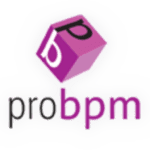Automation is not a new word, it has the roots from 1959, Arthur Samuel, the pioneer of AI. This
is one of the first steps towards innovation which would eventually lead to the creation of
Machine Learning. Robotic Process Automation is major technological progress where
companies will benefit by having a resilient, scalable, and reliable approach to use it in the day to
day task in an enterprise.
Robotic Process Automation (RPA) is a software technology, a user friendly tool to automate
digital tasks. Software users create software robots, or “bots”, that can learn, mimic, and then
execute rules-based business processes.
Robotic process automation tools idea is to replace a computer with a human in a digital
workforce environment. It doesn’t mean humans are replaced by robots, but in RPA there are
software configure automation workflows to automate the business operations. To be precise
automation bots will operate on a desktop application or web application and execute a multistep
process around the clock to run a specific action. The idea behind RPA technology is to have
business agility with nominal human intervention and create an error-free environment. By
adding automation to our daily tasks will highly improve the overall efficiency and productivity.
User can invest the quality time in something where human action necessary and assign a bot to
look for tasks which can be automated.
The goal behind using the RPA tools is to cut down the human intervention and inaccuracies
during the processes. Many might think, RPA is mostly used during testing. Testing is just one
area where automation is possible. Now there are many big players in the IT industry using RPA
for their day to day tasks. Sectors include customer Service, supply chain, Healthcare,
accounting, and financial services. For instance, when working on an HR application, every day
many processes occur and it needs a lot of information in the scenarios like hiring an employee
or similar tasks. Usually, member enrollment steps must be provided manually in any
applications and it can consume a couple of minutes to fill all the mandatory fields and it’s
highly prone to human errors. In these industries, the pressure on a man is reduced, and can use
his/her talents in a better way. So, RPA is a technology that will make the user work easy, in a
more reliable way.
Errors or inaccuracies will cost a lot to the organization and cause bigger damage. By taking the
advantage of RPA tools, an organization can prevent these human errors. While considering an
HR application, where RPA tool will automate all the Human Resource department processes
and complete the repetitive tasks without a lot of human intervention.
Using RPA tools, a User will cut down the time to half in comparison to manual entry. Besides,
the work quality will increase to approximately 99.97 percent. RPA tools usable will fetch a
better productivity rate to 30 percent. By using the RPA tool, the companies will benefit by
having accurate, reliable, consistent outputs with a high productivity rate.
Some of the well-known RPA tools are the software configurations to automate the tasks. Top
leaders are Blue Prism, Automation Anywhere, UiPath. These tools are widely used in the
industry on various projects. Each tool works great in its way. For instance, UiPath is more of a
drag and drop, where the user doesn’t need to master programming and can easily automate
tasks.




